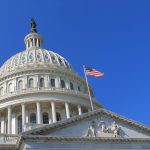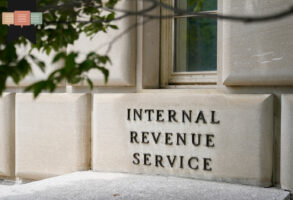Published October 6, 2015
President Ronald Reagan is invoked incessantly by conservative commentators and politicians, but never more so than when the subject is taxes. And so it was when Donald Trump released his plan for tax reform. Several conservative commentators have done Trump a favor (and the public a disservice) by vouching for the legitimacy of the plan and saying it is very much in the Reagan tradition.
That gives Trump far too much credit. His tax plan bears a superficial resemblance to Reagan’s agenda, but Reagan would never have proposed something so transparently infeasible.
Reagan is invoked too casually on taxes both by those who believe no tax cut is too big and by those who always want to raise taxes instead of cutting them. Both camps base their views on misleading interpretations of the Reagan record.
Reagan’s initial tax plan was an across-the-board cut in individual-income-tax rates of 23 percent, to be phased in over three years, coupled with a reduction in the corporate rate, and the eventual indexation (starting in 1985) of the income thresholds defining the tax brackets. When fully phased in, the top rate for individuals was to be 50 percent (down from 70 percent), and the lowest rate was to drop from 14 to 11 percent.
According to the Treasury Department, the average annual revenue loss from the Reagan tax cut over its first four years was 2.9 percent of GDP, or about 13 percent of total federal revenue.
Reagan wanted to couple the tax cuts with deep, and permanent, spending reductions on the domestic side of the federal budget. And, in his first year, he was quite successful in this regard, securing $131 billion in spending cuts over three years in the 1981 Omnibus Budget Reconciliation Act. After that initial effort, however, it became a much harder slog, as House Democrats, led by Speaker Tip O’Neill, dug in their heels to protect as many of their favored programs as they could.
In 1982, a year-long standoff between the parties over fiscal matters eventually resulted in a compromise tax and spending plan. Reagan agreed to a tax increase — mainly in terms of scaling back depreciation deductions for corporations — in exchange for promised spending reductions, which never materialized. The 1982 tax hike reversed about one-third of the revenue loss from the 1981 tax cuts while keeping the Reagan cuts in the individual-income-tax rates.
Democrats, and many in the media, point to 1982 as evidence that even Reagan wouldn’t fit in with today’s anti-tax GOP. But that’s a terribly flawed reading of the historical record. Reagan consistently pushed for lower taxes and lower spending throughout his presidency; in 1982, he saw an opportunity, in a politically divided Congress, to give a little on taxes — in the aftermath of the very large tax cut the year before — in exchange for even deeper spending cuts. He later considered this deal one of his worst mistakes as president because he had failed to secure an airtight plan to ensure that the cuts would actually be implemented.
It is also clear that Reagan would never have agreed to the 1982 deal if the 1981 tax cuts had not already been enacted. The 1982 tax hike did not undo in any way the positive growth effects achieved by the 1981 individual-income-tax cuts.
Reagan’s successful push for a revenue-neutral tax reform in 1986 secured his legacy by lowering the top individual rate to just 28 percent. The sum total of the Reagan record was a lowering of the economic burden on individuals and businesses and a massive simplification of the tax code.
His emphasis on tax cutting was always coupled, however, with efforts to keep deficits and debt under control so as to ensure that whatever he accomplished could be sustained. He struck numerous deals with Congress during his presidency — e.g., on civil-service pensions, Social Security, Medicare, and Medicaid — that, cumulatively, reduced long-term entitlement-spending commitments by trillions of dollars.
In 1989, the last fiscal year that began during the Reagan presidency, the federal budget deficit was 2.7 percent of GDP — only modestly above the average deficit of 2.2 percent in the 1970s. Moreover, Reagan’s successful efforts to hasten the demise of the Soviet Union led to the large reductions in Cold War defense spending that made balanced budgets a reality in the 1990s.
On a superficial level, the Trump tax plan resembles the Reagan approach, with its emphasis on lowering rates and providing tax cuts for all taxpayers. Trump proposes four individual-income-tax rates, with a top rate of 25 percent, and a zero rate for the many millions of households with incomes below $25,000 for individuals and $50,000 for couples. He also proposes to cut the corporate rate from 35 to 15 percent and to eliminate the estate tax.
The Tax Foundation estimates the revenue loss from the Trump plan at nearly $12 trillion over ten years, assuming no effect on the economy. With added economic growth, the revenue loss might fall to just above $10 trillion over a decade, or about $1 trillion per year.
A $10 to $12 trillion tax cut would court fiscal disaster. According to the Congressional Budget Office, total federal revenue over the period 2016 to 2025 is expected to be $41.6 trillion. The Trump tax plan would thus reduce federal revenue by between 24 and 29 percent, or about twice as much as the 1981 Reagan tax cut. The Tax Foundation notes that the increase in the federal deficit would be even greater than the amount of the lost revenue itself, since interest on the debt would soar.
Large tax-rate reductions of the kind Trump proposes would be feasible only if coupled with deep and permanent spending cuts and the elimination of popular tax deductions. Trump has not proposed anything remotely close to what would be required to prevent debt from soaring under his plan.
In contrast, Reagan campaigned in 1980 on implementing deep spending cuts in domestic programs.
President Obama has the nation skating dangerously close to a fiscal crisis. During his time in office, federal-government debt has risen from 39 to 74 percent of GDP, and he has avoided doing anything meaningful to rein in entitlement spending, which is set to soar as ever more baby-boomers retire. It would not take much — perhaps just a mild recession — for federal budget deficits to reach a point where they would be difficult to reverse without very painful austerity.
This does not mean tax cutting is no longer advisable. What’s needed is another course correction on taxes and spending, similar to what Reagan engineered through a series of initiatives throughout his presidency. Pro-growth tax reform should be the centerpiece, but it must be realistic in terms of revenue reduction and complemented by a sustainable fiscal plan that acts on the need for spending restraint, especially on entitlements.
That’s the kind of agenda worthy of being called Reaganesque. And it bears no resemblance to what Trump has proposed to date.
— James C. Capretta is a senior fellow at the Ethics and Public Policy Center and a visiting fellow at the American Enterprise Institute.









